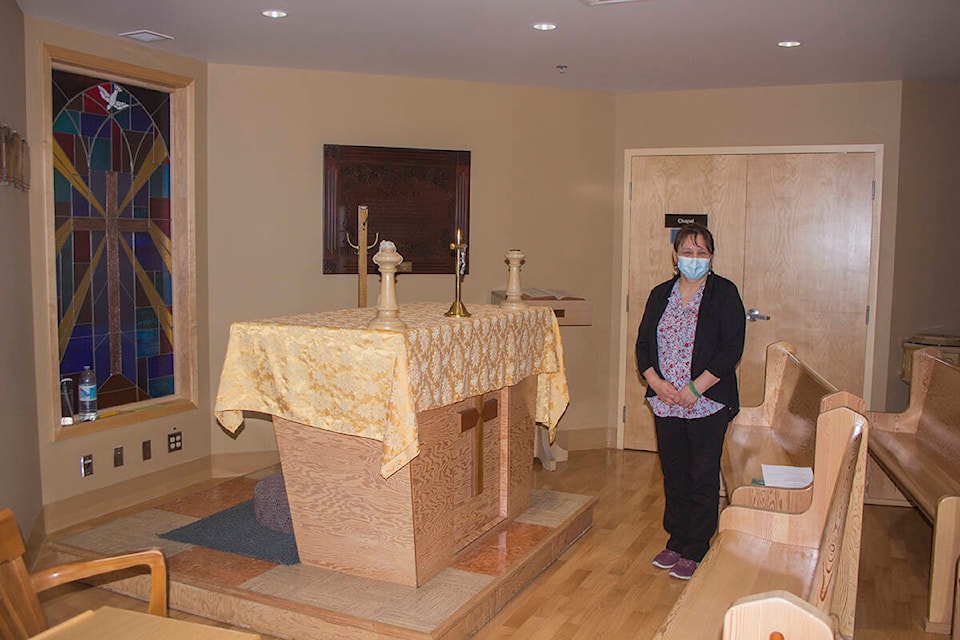Inuvik Regional Hospital plans to update its chapel to ensure it is available as a resource to everyone who accesses the hospital.
“Currently, the small space is crowded with many large items, and even before the Covid-19 pandemic the chapel has been under-utilized,” said regional Indigenous wellness co-ordinator Debra English. “Because of the number of items in it it is not accessible by someone in a wheelchair, and in general it is difficult to sit in or use the space unless the divider to the adjoining room is opened and the wooden pews are moved out.
“For some time, Sunday services have been held in Long Term Care, and not the chapel area. As a result, this small, but important space has very little use, and typically the 220 square foot chapel sits empty.”
Empty unless you count the four benches of pews and the large altar which occupies nearly half the room. The pews are pressed back against the wall four-strong, front-to-back, allowing for a small walkway to a jam-packed closet.
English said that updating the space would include removing large items and replacing them with items that fit more easily in the small space, as well as exchanging the hard, narrow pews with soft chairs that can more easily fit into the space in a circle or rows, and offer a space at any time of day or night when a patient of their family members needs to sit in quiet contemplation or prayer, or meet with a counsellor or clergy.
A pulpit would still be available and the doors to the adjoining multipurpose room could still be opened if there was a desire or need for a larger service.
“We formed a committee,” she said. “The committee included local clergy and representatives of the local churches. Many people in our region have had different experiences with religion.
“Some may not be comfortable being in a space that is overtly aligned with one particular religion, others find much comfort in a particular religion and the associated artifacts. With spirituality being so important to overall well-being we wanted to ensure this space is one where everyone feels comfort and peace.”
There’s only one problem — there’s nowhere to put anything new.
English said the hospital wants to ensure the existing items are treated in a respectful way and as the update moves forward. She added any Churches, organizations and residents should reach out to her if they are interested in any of the existing items.
“We are going to be reaching out to the region asking people to see if they want any of the items,” she said. “Those things will be available to churches or people in the region if they would like to access them. They can talk to us about what they would like to have.”
At this point, there is no timeline for when the changes to the chapel are to be completed, with input from the communities as to who the artifacts will be turned over to, it will be respectfully and gradual accomplished.
Noting spirituality is an important part of well-being, English noted the efforts to improve the inclusiveness of the chapel would encourage patients at the hospital to access and use the chapel.
“Ensuring it remains a space where people feel comfortable practising their faith is the priority,” she said. “The importance for the well-being of the community members visiting to have a space in the hospital to do quiet contemplation is the goal.”
